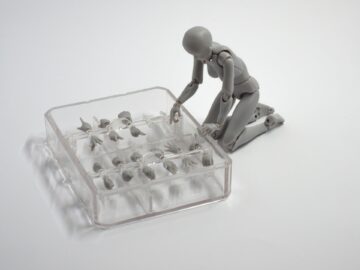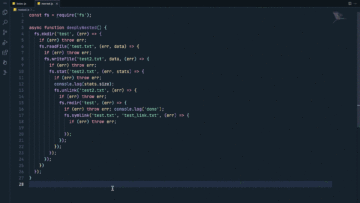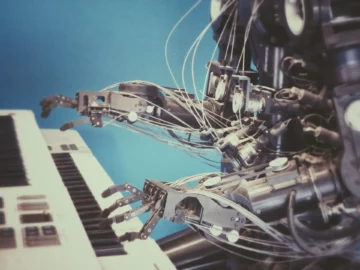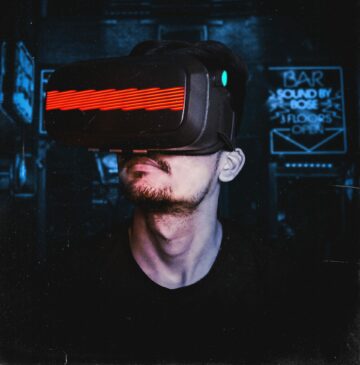Data science – that is the gathering, analysis and use of data – plays a central role in our modern world. From Big Tech to transportation, commerce through to government, it has been revolutionary in many aspects of our life, and healthcare is no exception. Having ushered in in new ways of fighting disease and improving the lives of patients, we are using data science to help us better identify people at risk of certain diseases, find candidates for clinical trials, develop new therapies, and respond to real and potential disease outbreaks. Without a doubt, it has the potential to improve public health, save lives and – in a very real and significant way – to make the world a healthier place.
We have talked about how data and health converge with Kris Sterkens, Company Group Chairman of Janssen Europe, Middle East and Africa (EMEA).
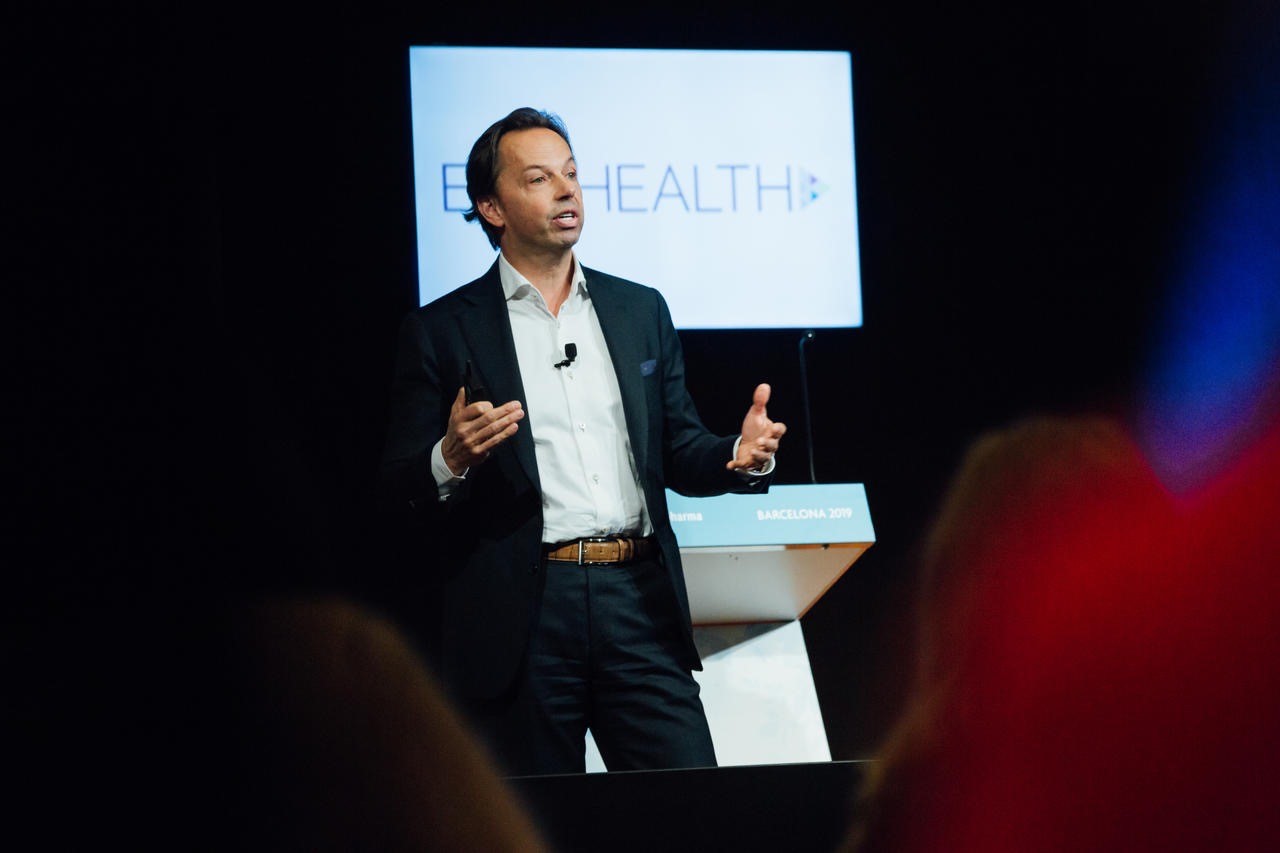 What is the role of data science in healthcare?
What is the role of data science in healthcare?
Data science is playing an increasingly significant role across the healthcare Industry. In a recent Economist Intelligence Unit survey of data scientists and professionals, 42% of respondents viewed healthcare as the sector in which data analytics had the potential to make the greatest impact.[i]
Data science allows us to process and manage the large quantities of data generated by healthcare systems, and then to analyze and organize this data for maximum effect. Through tracking and predictive modelling, data can help predict disease outbreaks. If we could do this, we could move more toward a well-care era, focused on prevention and early detection, and this could truly change the trajectory of human health.
As the global healthcare community (and the world in general) becomes more digitally focused, data science will be the key to unlocking the vast potential of our growing digital infrastructure and the valuable data it generates.
When it comes to data, what did the healthcare industry learn from the COVID-19 pandemic?
Covid-19 data became something we all became very familiar with during the crisis as it was often at the core of news reporting. This information became an essential tool in better understanding and managing the pandemic, and it offers a very recent and practical application of a surveillance framework known as the “Three M Theory”
- Monitor the spread of an epidemic
- Model and forecast its evolution
- Manage the epidemic by making timely decisions to limit or stop contagion
In the early stages of the pandemic, epidemiologists (often referred to as disease detectives in medicine as they study the cause of diseases, identify those at risk and determine possible ways to prevent or control the spread) were able to gather accurate and comprehensive data sets (Monitor) and use advanced analytics to understand how COVID-19 was spreading worldwide, where it would likely peak next and where the potential for viral mutations would be highest (Model).
These predictions proved remarkably accurate and meant clinical trial sites could be established in ‘hot spots’ where participants would be more likely to have exposure to COVID-19. In turn, this allowed for a more rapid assessment of a vaccine’s efficacy (Manage) across multiple COVID-19 variants.
Ultimately, what the COVID-19 pandemic highlighted was the urgent need to improve our digital infrastructure. Doing this would enable the global community to discover and implement new ways to use data science which would improve global health and lead to better outcomes in the future.

Another key learning from the pandemic was the importance of different countries looking to one another, to share tools and approaches that would allow them to quickly use and understand data and act on it. The healthcare sector is already coordinating global support for sharing data for future pandemics; for example, the new WHO Berlin Hub for Pandemic and Epidemic Intelligence, the Digital Health Center of Excellence (DICE) launched by UNICEF and WHO, and PANDEM-2 an EU-funded project that aims to develop new solutions for efficient, EU-wide pandemic management.
Does internet epidemiology and data science have the power to predict and prevent future diseases and virus outbreaks?
Internet epidemiology (or digital epidemiology) is the gathering of health-related data using digital sources including the internet, mobile phones, and other online technology. This approach absolutely has the potential to predict and prevent future health-related events and emergencies.
During the COVID-19 pandemic, we saw internet search data, digital contact tracing and social media analytics all play their part in predicting outbreaks and confronting the spread of the virus.
More recently, Germany has been using de-identified tracking apps to spot anomalies in people’s day-to-day habits – such as normally active individuals skipping exercising or regular walks – to predict when a community is likely to experience an outbreak[ii].
Going forward, it’s likely that data science could help mitigate the effects of future pandemics. It’s worked before: studies have shown that models can be created to analyze Google search queries, in order to track influenza-like illnesses across a population.[iii] These same methods could also have alerted health authorities to recent emerging threats such as Zika in Columbia and plague in Madagascar. If we had tracked internet search trends in the past, we could have intervened in these outbreaks and prepared healthcare facilities for what was coming. This may have reduced patient symptoms and prevented further infections.
What are the biggest challenges to introducing innovations like internet epidemiology and other big-data analytics initiatives to help predict and prevent disease?
There are ethical questions concerning the use of data and the tension between individual privacy and the broader needs of society. Data has tremendous power to help solve the next big health threat, but trust is paramount, and we must work with policymakers and engage the public to ensure we arrive at a solution that respects the individual and protects communities.
 A more technical challenge is that of improving our global digital infrastructure to allow us to exploit the full potential of data science. For example, South Africa’s well-established data-surveillance capabilities gave us an early warning of the dangers of the Omicron variant[iv], and the Dominican Republic now has the research capability to monitor annual outbreaks of arboviruses like Chikungunya, Zika and Dengue.4
A more technical challenge is that of improving our global digital infrastructure to allow us to exploit the full potential of data science. For example, South Africa’s well-established data-surveillance capabilities gave us an early warning of the dangers of the Omicron variant[iv], and the Dominican Republic now has the research capability to monitor annual outbreaks of arboviruses like Chikungunya, Zika and Dengue.4
However, many other countries are not as advanced when it comes to their data-surveillance and data-handling capabilities, leading to poor monitoring of certain diseases and drug resistance.
Supporting each other to improve the global digital infrastructure will allow greater collaboration and data sharing and help us address issues like the lack of historical data, access to real time data, interoperability, and security.
With such big competition for talent, what gives the healthcare industry the edge over tech giants?
A career in data science and healthcare puts you in a position to positively impact the lives of patients and the course of human health.
Beyond this, the health industry, is already utilizing data to help solve today’s biggest health problems. Using AI to identify patients likely to have rare, difficult-to-detect diseases can help us in the search for candidates for clinical trials. By analyzing histopathology images from people with bladder cancer, we can detect mutations that may make them more likely to respond to new potentially lifesaving therapies. We’ve also developed an AI-enabled platform that will allow us to leverage real-world data to help develop treatments for major depressive disorders.[v]
At Janssen, we are using the power of data science across our entire R&D portfolio, using AI and machine learning to generate high-value biological insights and targets. We have built a first-of-its-kind data analytics platform that integrates and links diverse data sets ranging from pre-clinical and clinical to real-world data, and we are actively engaged in the thriving data science community through more than thirty active collaborations, equity investments and more.[vi]
To drive change within the industry, we need to right people – people with a passion for improving global health and wellbeing. I started my career in finance, but I saw how my father – a physician – was able to touch the lives of patients every day. observing his career, and reflecting on what mattered to me, I knew I wanted to make the move to healthcare. It was one of the best decisions of my life.
Put simply, a career in healthcare data science offers a rare and exciting opportunity to work at the cutting edge of digital technology and at the same time, to help make the world a healthier place.
[i] https://expectexceptional.economist.com/managing-pandemics-with-data.html
[ii] https://www.scientificamerican.com/article/how-real-world-data-can-help-us-better-prepare-for-the-next-pandemic/
[iii] Ginsberg J, Mohebbi M, Patel R, Brammer L, Smolinski M & Brilliant L. Detecting influenza epidemics using search engine query data. Nature 457, 1012-1014 (2009).
[iv] https://www.weforum.org/agenda/2022/05/prevent-future-pandemics/
[v] https://www.janssen.com/blogs/strength-in-numbers-najat-khan
[vi] https://www.janssen.com/janssen-rnd-data-science/janssen-data-sciences-overview
- SEO Powered Content & PR Distribution. Get Amplified Today.
- PlatoAiStream. Web3 Data Intelligence. Knowledge Amplified. Access Here.
- Minting the Future w Adryenn Ashley. Access Here.
- Source: https://dataconomy.com/2023/04/24/when-data-and-health-converge-how-the-healthcare-industry-is-turning-to-data-science-to-curb-future-pandemics/
- :has
- :is
- :not
- :where
- 1
- a
- Able
- About
- absolutely
- access
- accurate
- across
- Act
- active
- active individuals
- actively
- address
- advanced
- africa
- AI
- aims
- All
- allows
- already
- also
- an
- analysis
- analytics
- analyze
- analyzing
- and
- annual
- Another
- Application
- approach
- approaches
- apps
- ARE
- AS
- aspects
- assessment
- At
- Authorities
- BE
- became
- becomes
- been
- before
- berlin
- BEST
- Better
- between
- Big
- big tech
- Biggest
- brilliant
- broader
- built
- but
- by
- CAN
- Cancer
- candidates
- capabilities
- Career
- Cause
- Center
- Center of Excellence
- central
- certain
- chairman
- challenge
- challenges
- change
- Clinical
- clinical trials
- collaboration
- collaborations
- Columbia
- comes
- coming
- Commerce
- Communities
- community
- company
- competition
- comprehensive
- contact
- contact tracing
- content
- control
- converge
- coordinating
- copyright
- Core
- could
- countries
- course
- COVID-19
- COVID-19 pandemic
- created
- credit
- crisis
- curb
- cutting
- dangers
- data
- Data Analytics
- data science
- data sets
- data sharing
- day
- day-to-day
- decisions
- Detection
- Determine
- develop
- developed
- DID
- different
- digital
- digital technology
- digitally
- discover
- Disease
- diseases
- disorders
- diverse
- do
- doing
- doubt
- drive
- drug
- during
- each
- Early
- East
- Economist
- Edge
- effect
- effects
- efficient
- EMEA
- emerging
- enable
- end
- engage
- engaged
- Engine
- ensure
- Entire
- Epidemic
- Epidemics
- equity
- Era
- essential
- established
- Ether (ETH)
- ethical
- Europe
- events
- Every
- every day
- example
- Excellence
- exception
- exciting
- experience
- Exploit
- Exposure
- facilities
- familiar
- fighting
- finance
- Find
- focused
- For
- Forecast
- Forward
- Framework
- from
- full
- further
- future
- gathering
- gave
- General
- generate
- generated
- generates
- Germany
- gives
- Global
- global digital
- Global health
- Google Search
- Government
- greater
- greatest
- Group
- Growing
- had
- Have
- having
- Health
- healthcare
- healthcare industry
- healthier
- help
- highest
- Highlighted
- his
- historical
- How
- HTML
- HTTPS
- Hub
- human
- i
- identify
- if
- ii
- images
- Impact
- implement
- importance
- improve
- improving
- in
- Including
- increasingly
- individual
- individuals
- industry
- Infections
- Influenza
- information
- Infrastructure
- initiatives
- innovations
- insights
- Integrates
- Intelligence
- Internet
- Interoperability
- introducing
- Investments
- issues
- IT
- ITS
- jpg
- Key
- known
- Lack
- large
- launched
- lead
- leading
- LEARN
- learning
- Leverage
- Life
- like
- likely
- LIMIT
- links
- Lives
- looking
- machine
- machine learning
- major
- make
- Making
- manage
- management
- managing
- many
- max-width
- maximum
- May..
- Media
- medicine
- methods
- Middle
- Middle East
- Mitigate
- Mobile
- mobile phones
- modelling
- models
- Modern
- Monitor
- monitoring
- more
- move
- multiple
- Need
- needs
- New
- new solutions
- news
- next
- no
- normally
- now
- of
- Offers
- often
- on
- ONE
- online
- Opportunity
- or
- order
- Other
- our
- over
- pandemic
- Pandemics
- Paolo
- Paramount
- part
- participants
- passion
- past
- patient
- patients
- Peak
- People
- people’s
- phones
- physician
- Place
- Plague
- platform
- plato
- Plato Data Intelligence
- PlatoData
- Play
- playing
- policymakers
- poor
- population
- portfolio
- position
- possible
- potential
- potentially
- power
- Practical
- predict
- predicting
- Predictions
- prepared
- prevent
- Prevention
- privacy
- problems
- process
- professionals
- project
- proved
- public
- public health
- Puts
- queries
- Questions
- quickly
- R&D
- ranging
- rapid
- RARE
- real
- real world
- real-time
- recent
- recently
- Reduced
- referred
- regular
- Reporting
- Republic
- research
- Resistance
- respects
- Respond
- respondents
- revolutionary
- right
- Risk
- Role
- same
- Save
- Science
- scientists
- Search
- search engine
- sector
- security
- Sets
- Share
- sharing
- shown
- significant
- simply
- Sites
- Social
- social media
- Society
- solution
- Solutions
- SOLVE
- something
- Sources
- South
- Spot
- spread
- Spreading
- stages
- started
- Stop
- studies
- Study
- such
- support
- surveillance
- Survey
- Symptoms
- Systems
- Talent
- targets
- tech
- tech giants
- Technical
- Technology
- than
- that
- The
- The Future
- the world
- their
- Them
- then
- These
- they
- this
- those
- threat
- threats
- thriving
- Through
- time
- to
- today’s
- tool
- tools
- touch
- toward
- Tracing
- track
- Tracking
- trajectory
- transportation
- tremendous
- Trends
- trial
- trials
- Trust
- TURN
- Turning
- understand
- understanding
- UNICEF
- unit
- unlocking
- urgent
- us
- use
- using
- Utilizing
- Valuable
- Vast
- very
- virus
- wanted
- warning
- was
- Way..
- ways
- we
- wellbeing
- were
- What
- when
- which
- WHO
- will
- with
- within
- without
- Work
- worked
- world
- worldwide
- would
- you
- zephyrnet


